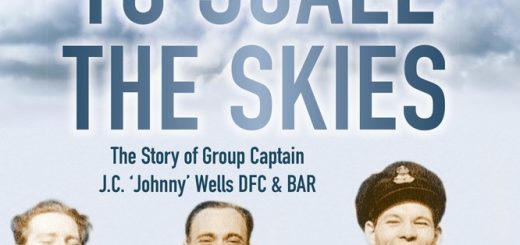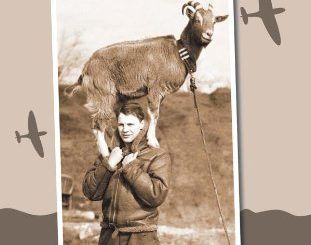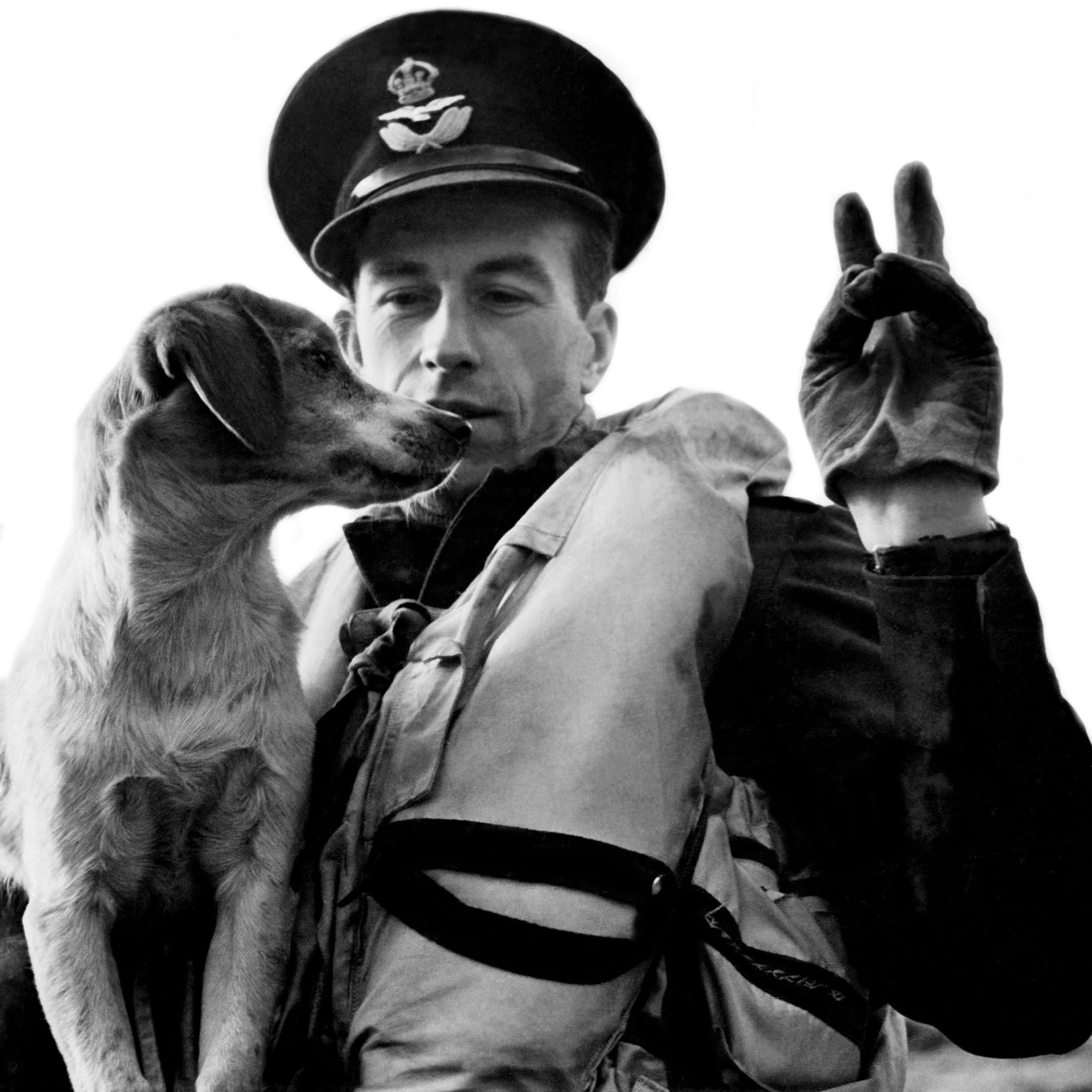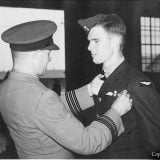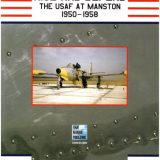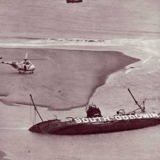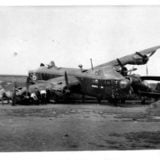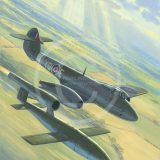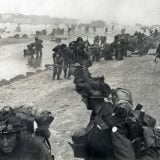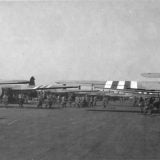The Mallon Crew

We are delighted to be able to share with you another book that has a connection to Manston. The author made contact with the site after his tweet today in connection with D-Day. Later in the post, is an extract from the book which mentions Manston, which he has sent to us to share.
6 June 44: Bill Mallon, on train from RAF Manston to No 3 AFU at RAF South Cerney, Gloucs, was told about the #DDay landings @ManstonHistory pic.twitter.com/Ai1HezQEkT
— Vic Jay (@TheMallonCrew) June 6, 2017
‘The Mallon crew’ is the extraordinary result of four years of research. My decision in 2012 to write a blog about my father’s war-time experiences as the Flight Engineer of a Lancaster bomber took me on an incredible voyage of discovery and unearthed some remarkable stories of courage, sacrifice and betrayal.
As a child growing up in the 1950s I never tired of asking my dad about what he did in the war. I wanted to know all about his role, what flak was like and even how aircraft were able to fly. By the time I left primary school my interest had started to wane and, when he died in 1974 at the age of just 55 I thought I had lost any chance of discovering more about his life. I couldn’t have been more mistaken.
Nearly forty years later, with just a handful of photographs, his flying log book and the name of his New Zealand pilot, Bill Mallon, my modest research project into ‘Bob Jay’s war’ uncovered more tragedies than I could have imagined possible and connected me with the families of all but one of my dad’s crew. It even gave me the opportunity to talk to a man of 94 who had flown with my dad and to find a photograph of my dad’s aircraft flying to his last target.
This book is not about a squadron, nor is it about individual acts of heroism, it is about the Mallon crew, a small group of unremarkable men thrown together briefly during the last few months of the war and the amazing way in which their stories have unfolded seventy years later. I defy anyone not to be moved by their experiences nor to marvel at the power of the internet to bring people together.
Vic Jay (Author)
You can buy the book from the International Bomber Command Centre website here: http://internationalbcc.co.uk/shop/the-mallon-crew/
Alternatively you can order the book at a discounted rate from the author by emailing TheMallonCrew@gmail.com for more details.

An extract from the book in connection with Manston, by kind permission from the Author. It is from a transcript of an interview with Bill Mallon shortly before he passed away, by the New Zealand Defence Force ‘Military Oral History Project’:
Bill Mallon was in Brighton for about three weeks before being posted to R.A.F. Manston in Kent, fifty miles from R.A.F. Detling from where his brother Jack had flown to his death just three years earlier. There were no opportunities to fly at Manston, but Bill enjoyed his time there carrying out ‘flying control duties’, later to be called ‘air traffic control’, for about six months. At least he was in the company of aircraft and it took him back to his youth watching Gypsy Moths with his brothers at Bell Block airfield.
There were Hawker Typhoons on permanent stand-by at Manston in 1944, with Tempests arriving while he was there, and it was an emergency landing field for disabled bombers. There was also a Fleet Air Arm section equipped with the Fairey Swordfish and the Supermarine Walrus for air sea rescue, and Bill was in his element, although he longed to be in the cockpit. He was aware that it could have been a lot worse though – some pilots were posted to the New Zealand Army post office in London!
Manston was one of the few airfields at the time equipped with F.I.D.O., the Fog Investigation and Dispersal Operation, designed to remove fog from airfields with burning petrol. Bill recalled many incidents of badly damaged aircraft landing on the emergency runway. He described bombs falling off aircraft and rolling across the runway, and of aircraft crashing and having to have their bombs defused before they could be moved. It was clearly an eventful posting, with some of the incidents having tragic consequences. ‘We’ve seen many accidents there, some of them very tragic’ was how Bill remembered it.
Whilst at Manston, Bill became friendly with the senior officer in Flying Control, Squadron Leader Jock Leaper, who was a former WW1 pilot and, according to Bill, ‘a delightful man to work with.’ S/L Leaper lived off-station with his wife in the village of Manston, and would cycle to work every day. Bill had a deal with him that, if it was raining, he would take one of the station’s cars under the pretext of checking the outer lights, then collect ‘Jock’ and his bike. ‘Security checks were never a problem with a Squadron Leader in the car’.
Whenever he was granted leave, Bill would meet up with people he knew from home at the New Zealand Forces Club on Charing Cross Road in London, an ‘all ranks’ clubs generally considered to be very good for morale and described by Bill as a ‘great set-up’. During one leave, he was able to meet up with his surviving brother, Tom – it was to be the last time he saw him.
Bill had by this time been in the military for nearly three years, and my dad, who would join Bill’s crew later in the year at No. 1669 H.C.U., had only just been summoned to R.A.F. Regent’s Park, less than two miles away from the club, to start five weeks basic training.
Bill was promoted to flight sergeant on the 29th March 1944, and remained at Manston until the 6th June, when he travelled to R.A.F. Padgate, coincidentally where Bob had had his unsuccessful interview in 1942, on his way to an Advanced Flying Unit. Bill says he heard about the D-Day landings on the train to Padgate, but he had been aware for some time that something was afoot, as it was impossible to miss the huge build-up of troops, tanks, vehicles and equipment near the south coast.
He arrived at No.3 A.F.U. in South Cerney, Gloucestershire on the 8th June, and was billeted at R.A.F. Bibury, where there was a relief landing strip. Here, he was to become familiar with the Airspeed Oxford, another twin-engine aircraft used extensively in the training of Commonwealth aircrews, as well as navigation, map reading and night flying. It was the first time he had carried out night flying under complete blackout, and for the first time he learned how to fly with reference to the instruments alone. He also had to get used to flying in what were described as ‘English conditions’ or, as Bill put it, ’bloody awful English weather’.
DETAILS
- Paperback: 216 pages
- Publisher: CreateSpace Independent Publishing Platform; 1 edition (4 Oct. 2016)
- Language: English
- ISBN-10: 1523252898
- ISBN-13: 978-1523252893
- Product Dimensions: 15.2 x 1.2 x 22.9 cm



